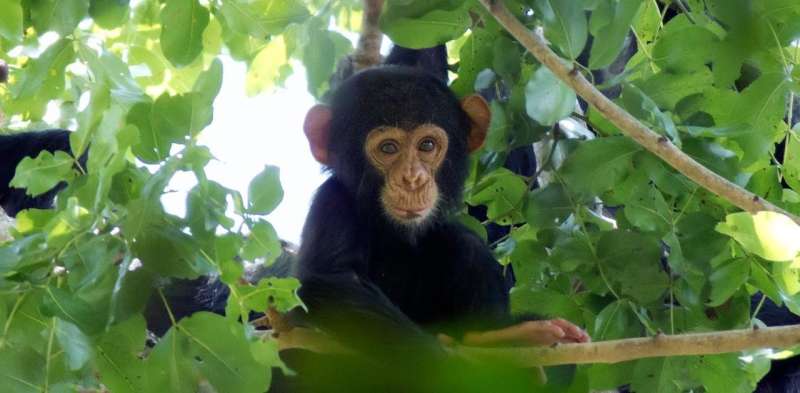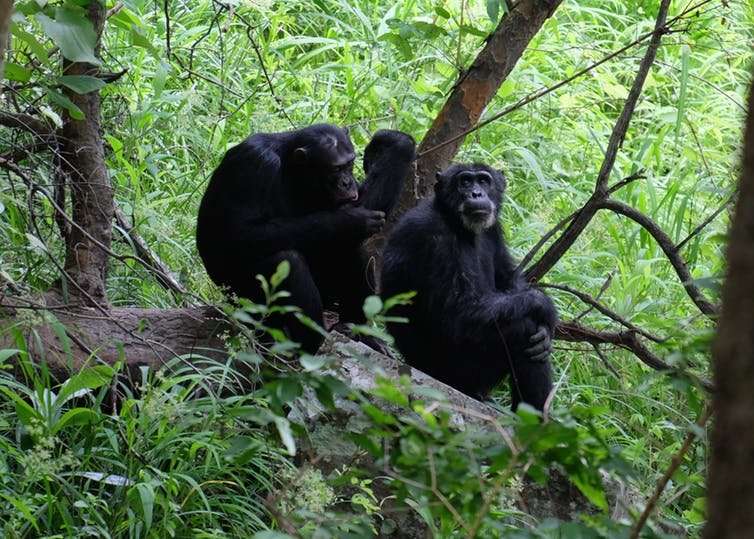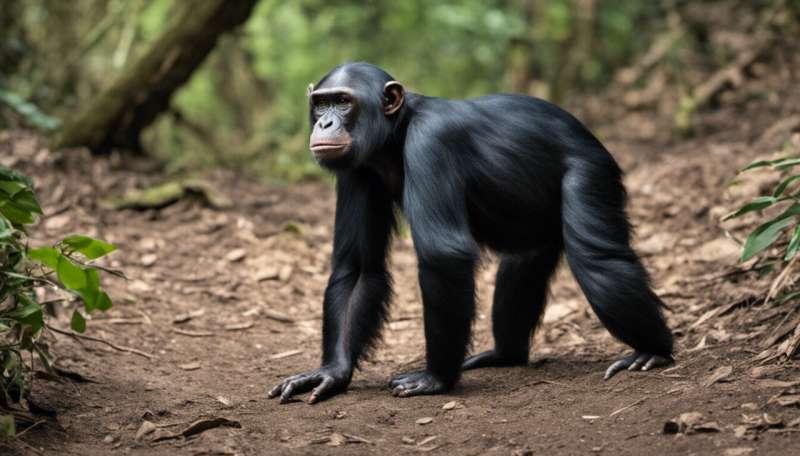How chimp DNA techniques turned us into jungle detectives

Finding wild chimpanzees is not easy. In the first ten years we spent scouring the remote woodlands of western Tanzania in search of them, we caught only fleeting glimpses and brief views of their shadows avoiding our very presence. Chimpanzees are naturally clever and elusive. They seem to know where you will go before you known yourself. And they have an amazing way of blending into the forest or else escaping undetected.
The pioneers of chimpology such as Jane Goodall and Tosihada Nishida, used bananas and sugar, respectively, to earn chimpanzees' trust. We now know better, and that such direct contact exposes apes to human diseases and offsets a natural balance within their communities. Instead, researchers like us can spend the better part of a decade following tracks and traces of the shadows in the forest, hoping for a glimpse and eventually to have our presence tolerated.
New technologies such as camera traps, acoustic sensors, and drones are helping make this process easier. And on our most recent field trip we explored a less typical, more creative way to study them, turning to DNA techniques to try to find evidence of chimpanzee behaviour without actually seeing or disturbing the animals.
Chimpanzees, unlike most animals, are regular tool users of stones and sticks. For over 50 years we've known that their prolific termite fishing proves chimpanzees are technologically superior to their ape peers.
Chimpanzees have whole sets of tools to probe termite mounds, extracting the termite "soldiers" and feasting on these rich sources of protein. Different chimp groups also have different termite-fishing techniques. Some chimpanzees we've encountered may even plan ahead and prepare tools before they arrive at mounds, showing the kind of forward planning that was once thought to be uniquely human.

Now, thanks to DNA analysis, chimpanzee tools are revealing something else. In our second year studying chimps in the Issa Valley, Tanzania, we wondered if chimpanzee termite fishers left their DNA on the tool they used to feast. We surveyed termite mounds, collected tools, and employed forensic techniques to extract DNA molecules left on over 50 tools. Now that we know we can collect chimpanzee DNA in this way, we may be able to put together a more detailed picture of chimpanzees' otherwise invisible behaviour.
For example, by identifying the DNA on tools, we can work out where individual chimpanzees spend their time. Then we can reconstruct chimpanzee social groups (who's spending time with whom and where?). We can follow them across the landscape as they travel, feed, and socialise.
We can also use the DNA signatures found in their faeces or on their tool remains to identify which food sources are important to different groups of chimpanzees and at what times of year. And, on a broader scale, we can count chimpanzee numbers and assess population size by estimating how frequently we encounter their DNA.

Wider uses
This kind of non-invasive genetic monitoring could also reveal critical information for conservation planners. It could enable them to identify important resources for chimpanzees, as well as how those resources are actually exploited. It could tell us which individuals raid human crops, much the same way camera traps are doing.
What's more, the technique has implications beyond studying living primates. What we have done here is reconstruct an otherwise invisible past. Given our close genetic relatedness to all apes, chimpanzee behaviour can teach us about our own past, adding another piece to our reconstruction of human origins.
DNA has already taught us how we humans evolved, emerged out of Africa and spread around the world. There is even evidence in the fossil record of termite fishing tools made by early humans. With the technique that we demonstrate here with chimpanzees, we may be able to confirm which early human species was doing this termite fishing. This would give us a greater understanding of the behaviour of our prehistoric ancestors, the critical ingredient that does not fossilise.
Provided by The Conversation
This article was originally published on The Conversation. Read the original article.![]()



















